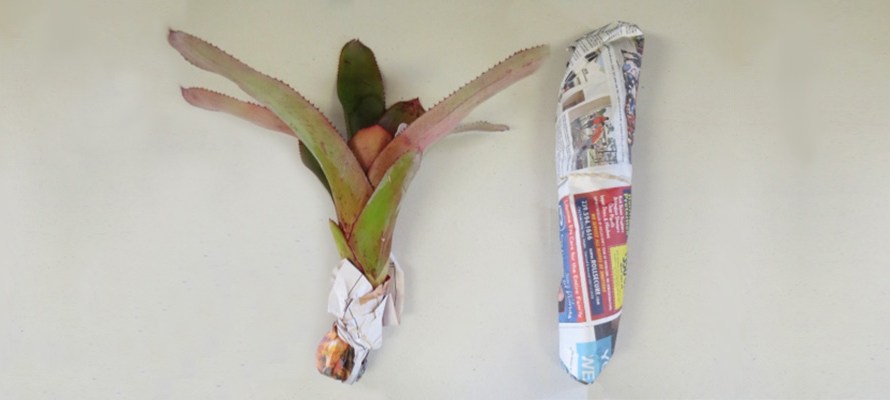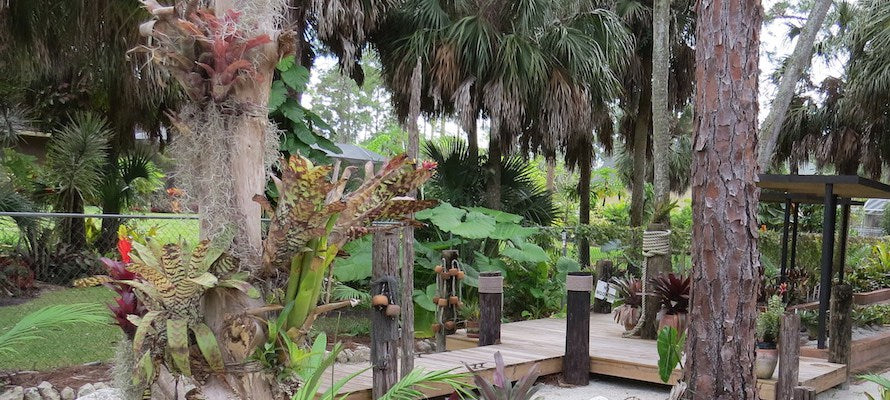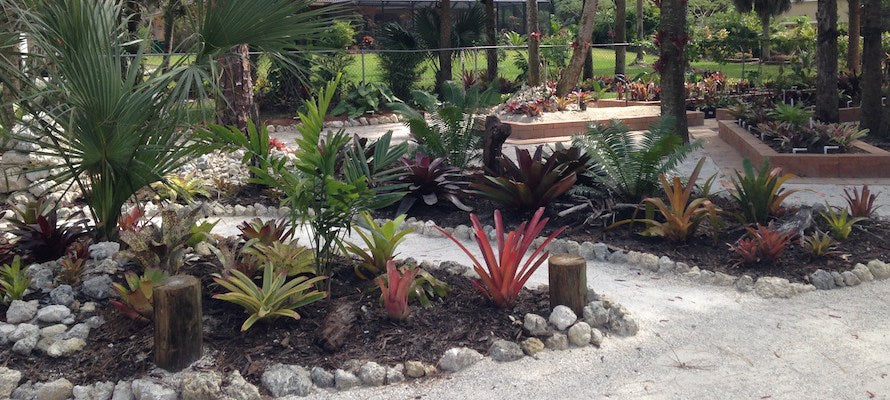Your Cart is Empty
Get Free Shipping on all orders $120 or more.

Bromeliads consist of a large family of plants native to temperate North, Central and South America. These plants are quite unique in the fact that they can be found growing in numerous habitat types such as forests, savannas or even the desert. They can be found growing on trees, on scrub, on rocks or in the soil. This amazing life process gives these plants the ability to adapt to a wide range of environmental conditions. However, if the grower has a general understanding of the needs of individual species or hybrids and applies them right, a plant can reach its full potential of size, form, color and general appearance. This can be done by doing a little research on the individual plant or contacting your seller for more information.
Water is one of the key success factors in caring for your Bromeliad.
Watering bromeliads is somewhat unique in the fact that they take their water through the leaves and cups as well as the roots. The large broad-leaf varieties have large cups formed by the leaves. These cups act as reservoirs of water which the plants use as needed. Therefore, these cups should be kept fairly full most of the time. In their native habitat, Bromeliads use these cups for catching and storing rainwater as well as channeling the overflow to the roots. Under normal conditions water should be added as needed to keep cup well supplied but also allowing potting medium to somewhat dry out in between waterings.
The smaller, stiff-leafed Tillandsias are watered a little differently. They have small silvery colored hairs on the leaves which absorb water and moisture. Therefore, just wetting the leaves is sufficient. Normally 2 to 3 times a week is adequate depending on humidity and temperature. The easiest and neatest method indoors is with a spray bottle.
Bromeliads prefer clean water with a minimum of dissolved minerals. This isn’t always possible, but using higher quality water when possible will help your plants keep strong and healthy leaves and produce strong pups.
Rainwater: This is the best source of water if it is plentiful and handy. If you can, build a rain water collection system to store as much rainwater as possible. Be sure not to store your collectors where the water can be polluted though. Some roofs and drainage systems can contain pollutants that can damage your plants. Obviously this is not always going to be possible depending on where you live, but luckily you have more options available.
Reverse Osmosis: Often called ‘RO’ water, this is an excellent source if available. Smaller inexpensive ‘RO’ units are now widely available to the hobbyist and is used by most professional growers (including us) to minimize residue on leaves. If you can’t set up the equipment yourself, you can usually find fresh ‘RO’ water at your local fish store.
Distilled: The quality of distilled water is usually excellent because of the distillation process to remove the water from the impurities (much like nature does) instead of the other way around. This however can be expensive and bothersome because most distilled water is only available in 1 gallon jugs, and if you are watering more than a few plants, a lot will be wasted due to run off.
Filtered: Filtered water varies widely in quality based on the original source of the water and the type and quality of the filter used. Without testing for dissolved solids, you may be getting ordinary tap water with some minor filtering. It is however still better to run your water through a filter
than to use water straight from the tap, especially in more urban areas where it may sit in pipes and be treated with chemicals.
Tap: Tap water is adequate in most cases, but usually has chemicals and sediments which can build up on the leaves and in the potting mix. If your Bromeliads have white mineral build-up at base of their leaves, your water is too hard.
Softened: Do not use softened water. During the softening process, sodium carbonate is used to remove calcium and magnesium from the water. The high concentration of sodium ions that are left behind can damage your plants.
Remember, keep cups filled, but when it comes to potting medium, don’t over water! “When in doubt, let dry out” between waterings for best results. This will allow roots to thrive and therefore your plant to thrive.
The post Bromeliad Care: Watering appeared first on Bromeliad Paradise.

When a bromeliad is ordered on-line, it will either be taken as an offset from a mother plant, or it will be taken from a pot. Either way, it is possible that it has already started to grow roots.

Bromeliads are a type of plant called epiphytes, which means that they draw moisture from the air and don’t need to be in soil to survive. While their roots can draw water and nutrients, they typically serve as a plant’s ‘anchor’, attaching and holding it place.

Although mosquitoes are not a pest that can harm your bromeliads, they can become very annoying to everyone around them. Mosquitoes are currently a topic of conversation as common sense and the facts often give way to rumor and sensationalism.